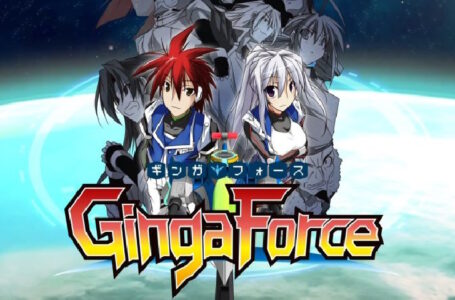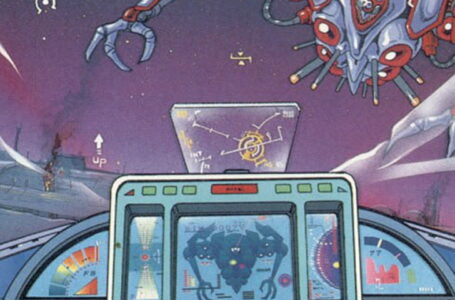Natsuki Chronicles is a “greatest hits” of classic shoot ’em ups
Qute Corporation, developer of Natsuki Chronicles, is one of the best-kept secrets in the shoot ’em up space. While the company has only made a few games over the years, meaning it’s nowhere near as well-known as the Caves, Compiles and Raizings of the world, it is 1) still active today and 2) in possession of a flawless track record.
Beginning with 2004’s excellent Judgement Silversword for Wonderswan Color (later ported to Xbox 360 and Microsoft Windows), continuing through the wonderfully creative Judgement Silversword spinoff Cardinal Sins, and 2011’s stunning Eschatos, then onwards to 2013’s highly enjoyable Ginga Force, Qute has consistently proven that it knows how to make solid shoot ’em ups that feel fresh and modern while simultaneously paying homage to classics of the genre. And new title Natsuki Chronicles, available now for PS4 and Windows PC, is no exception.
This article is based on the PS4 version. A review copy was provided by Rising Star Games.
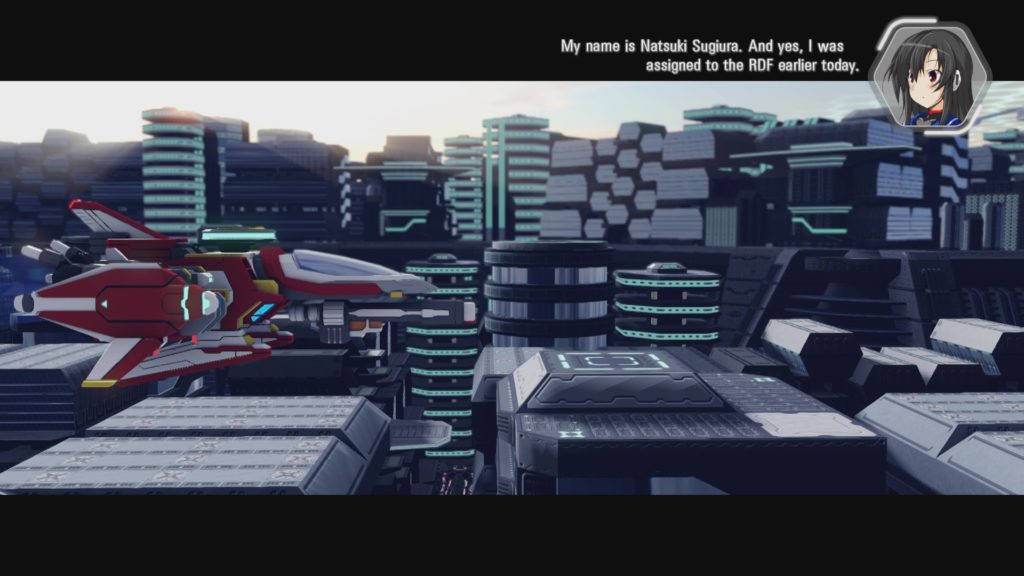
In Natsuki Chronicles, you take on the role of the eponymous heroine, who is a pilot for the Rapid Deployment Force (RDF) division of the Mitsurugi Security Service, a corporation that has supposedly tasked itself with the safety of planet Seventia. Over the course of her missions, Natsuki comes to question the true intentions behind her assignments from the RDF, particularly as her commanding officers seem a little too enthusiastic about her killing her targets rather than simply taking them into custody. And, as you might expect, things escalate considerably from there.
Natsuki Chronicles’ gameplay builds on the foundations set by both Eschatos and Ginga Force, only this time unfolding as a side-on horizontally scrolling title rather than a top-down vertical scroller. Natsuki has access to two main weapons in her ship: a primary weapon which fires forwards, and a secondary weapon that either fires backwards or provides some sort of supporting fire for the front shot.
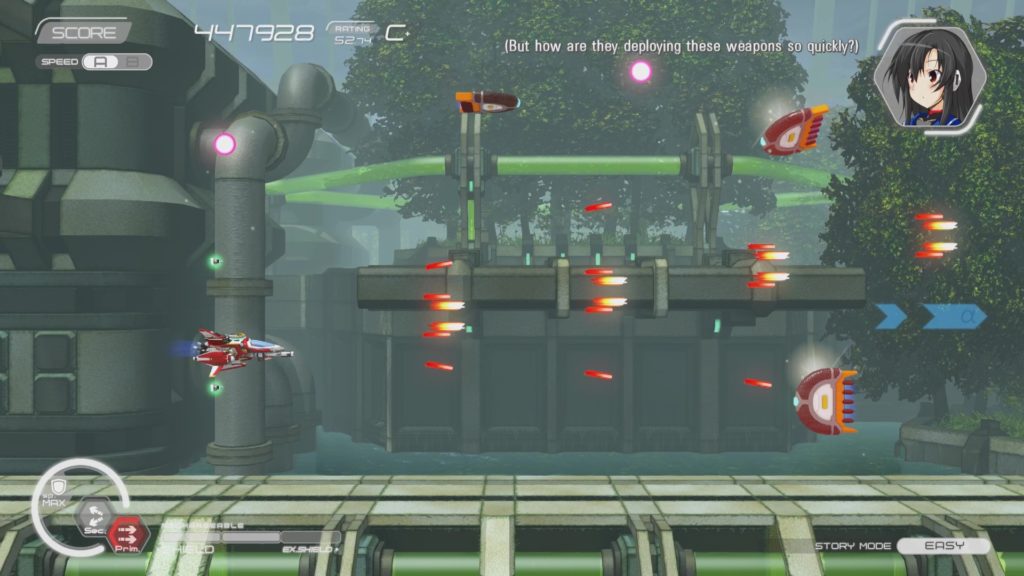
Both weapons can be fired either independently or at the same time; in the latter case, the power of both is reduced somewhat — though this can sometimes be helpful to affect the trajectory of your shots. For example, the default rear-firing cannon shoots in two diagonal directions when used by itself, but when combined with the primary weapon it shoots straight backwards, which is often a tad more useful.
Alongside the two main weapons, Natsuki also has access to Options of various types. Some of these act as shields that can block bullets or kamikaze enemies in various locations, while others can be used as offensive weapons. The Options require charging after you use them, though, so you’re best off trying not to rely on them too much — it’s generally better to dodge a bullet than block it.
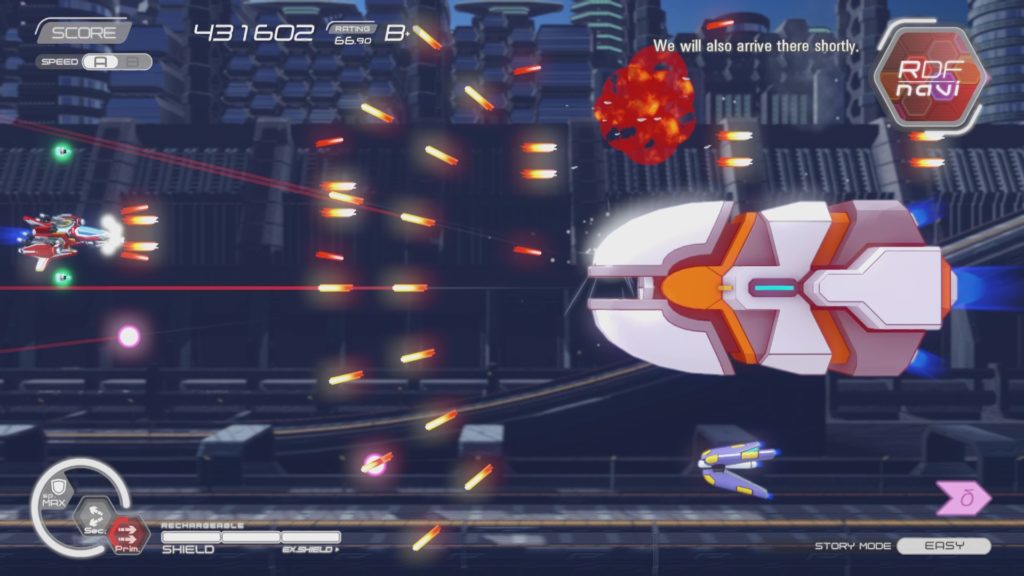
And it’s in this aspect that Natsuki Chronicles really shines, particularly for shoot ’em up newcomers. By default, any “high threat” bullet patterns on screen will be preceded by red telegraph markers indicating the trajectory they will be taking, allowing you to position yourself safely to let them pass by. You often don’t have long to spot these markers, but the fact they are there makes learning the distinctive shot patterns of each enemy much easier — particularly when it comes to the bosses.
The best part is that you can customise this aspect of the game to your liking. If you’re a shoot ’em up veteran and you prefer to play without telegraphs, you can turn them off completely. At the other end of the spectrum, if you’re struggling, you can turn on telegraphs for all bullets rather than just the ones the game considers to be “high threat” — though note this can quite easily make things seem a bit more overwhelming than they really are!
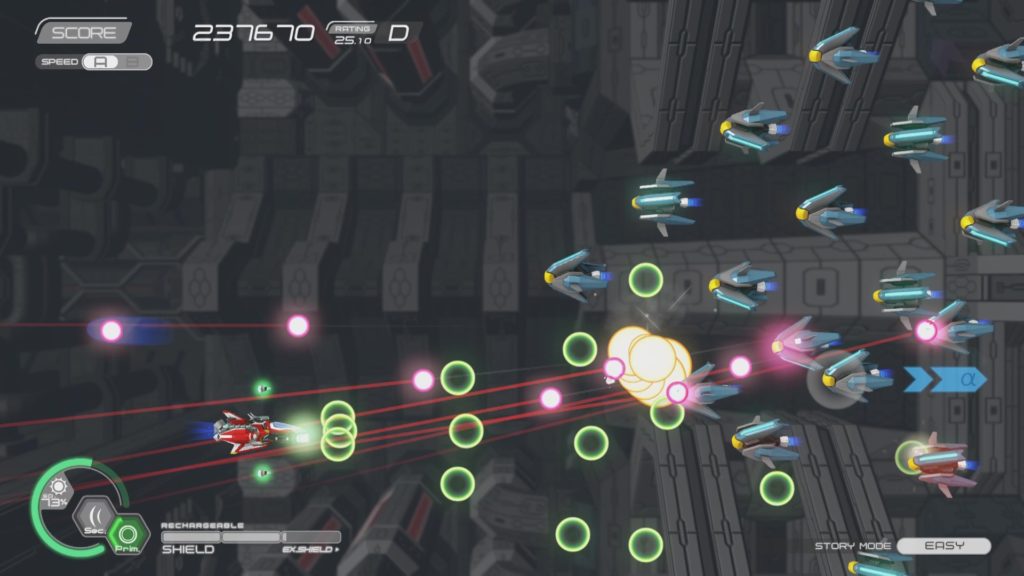
Alongside this, you can also switch on or off markers at the edge of the screen indicating where new enemy patterns will be appearing from, allowing you to prepare yourself accordingly for them, and you can even choose the visual and audio effects when you successfully deflect bullets using your Options. On top of all that, Natsuki’s ship also has two speed settings you can switch between, and in the options menu you can choose precisely how fast or slow each of these are. You really can tweak the game to your liking.
You can tell Natsuki Chronicles is a game built for the home rather than the arcade, because one particular aspect of it stands out as rather more friendly than the quarter-munchers of yore: the fact that Natsuki’s shield regenerates over time. While your end-level “rating” suffers if you take too many hits along the way, so long as you leave a long enough gap between each hit you take, you can continue playing without having to start over!
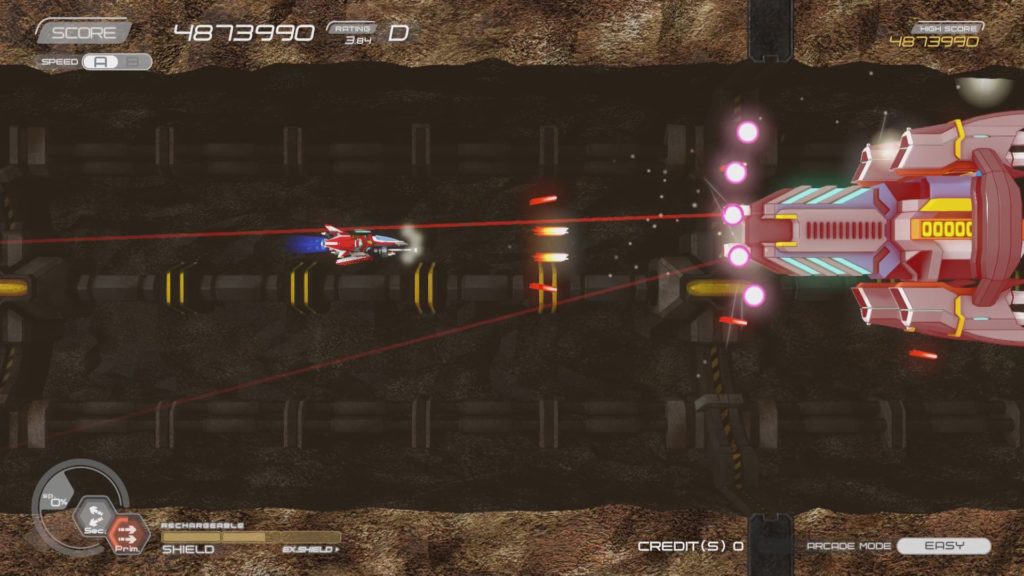
One of the best things about Natsuki Chronicles is the fact that each of its stages is clearly paying homage to a classic horizontally scrolling shooter from years gone by. There are high-speed scrolling stages with swarms of popcorn enemies that feel like a Darius game; more deliberately paced stages featuring perilous scenery to navigate that are strongly reminiscent of titles like R-Type and Gradius; even a stage where most of the danger comes from artillery units on the ground, giving a strong feeling of Konami’s venerable classic Scramble, the game that invented the horizontally scrolling shoot ’em up genre!
You can enjoy Natsuki Chronicles in two distinct modes. The Arcade mode strips out all the narrative content and simply presents you with a linear sequence of stages to challenge, with the aim being to score as many points as possible. The more you play Arcade mode, the more you increase your “Operator Level” — and the higher your Operator Level is, the more credits you have available to continue your game if you happen to come a cropper along the way.
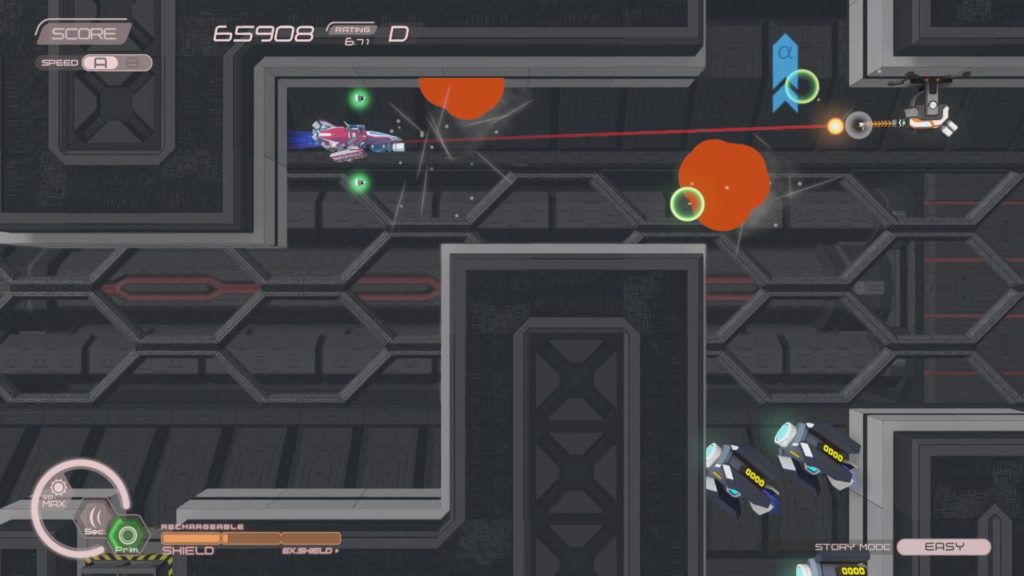
In Arcade mode, Natsuki acquires primary and secondary weapons plus the various Options by collecting pickups dropped by crate-carrying enemies. These are often positioned in levels in such a way that they provide a particularly helpful weapon exactly when you’ll need it. In one stage where enemy ground installations are positioned awkwardly behind walls, for example, you’re provided with the Wave cannon, which can shoot through walls; conversely, when you approach a boss encounter, you’re typically provided with the standard cannon, which is usually the most effective.
The pickups serve another function too, though; they add extra points of shield to Natsuki’s ship, known as “EX Shields”. These don’t recharge like her main shields, but they do mean the more power-ups you’ve grabbed, the more hits you can take. The trade-off is that each hit you take also takes a power-up with it; thankfully, this isn’t a game where losing all your power-ups means you’re immediately in an utterly hopeless situation, but you are, of course, best off holding on to them all for as long as possible.
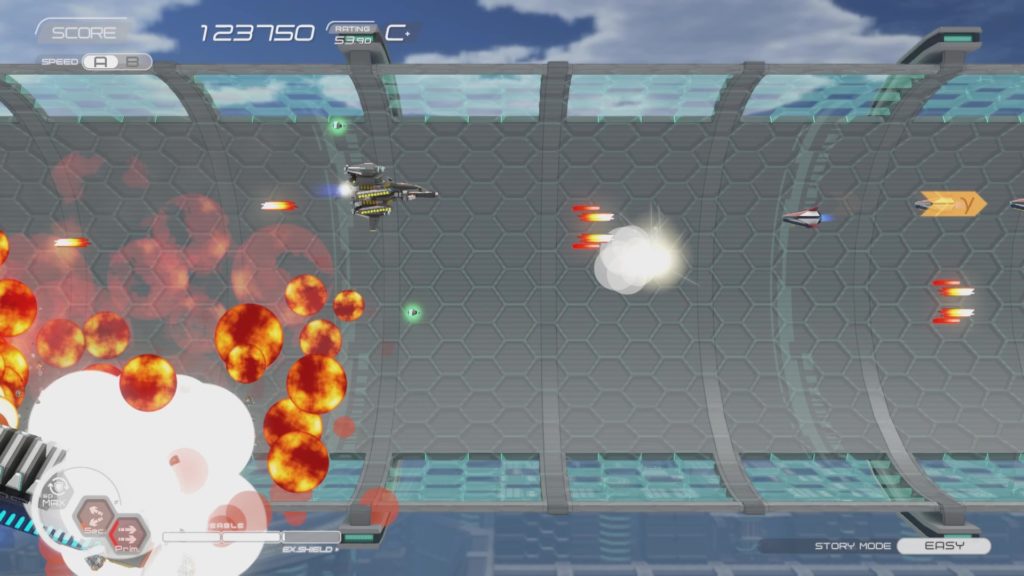
While Arcade mode is fun and provides plenty of longevity, probably the main attraction of Natsuki Chronicles when you start it up for the first time will be the Story mode. Here, you follow the story as it jumps back and forth along a timeline, beginning at Natsuki’s “Turning Point”, flashing back to the missions that led her to that point, and occasionally jumping back even further to her initial training missions alongside her friend Margaret.
In Story mode, each stage is taken as a self-contained affair that you must successfully clear in order to unlock the next part of the story. Each stage can be played in Easy or Normal difficulty to begin with, with harder difficulties unlocking as you prove your worth. It’s worth noting here that Easy is still pretty tough — this is a shoot ’em up after all — so you should feel no shame at starting on this level while you’re learning the ropes!
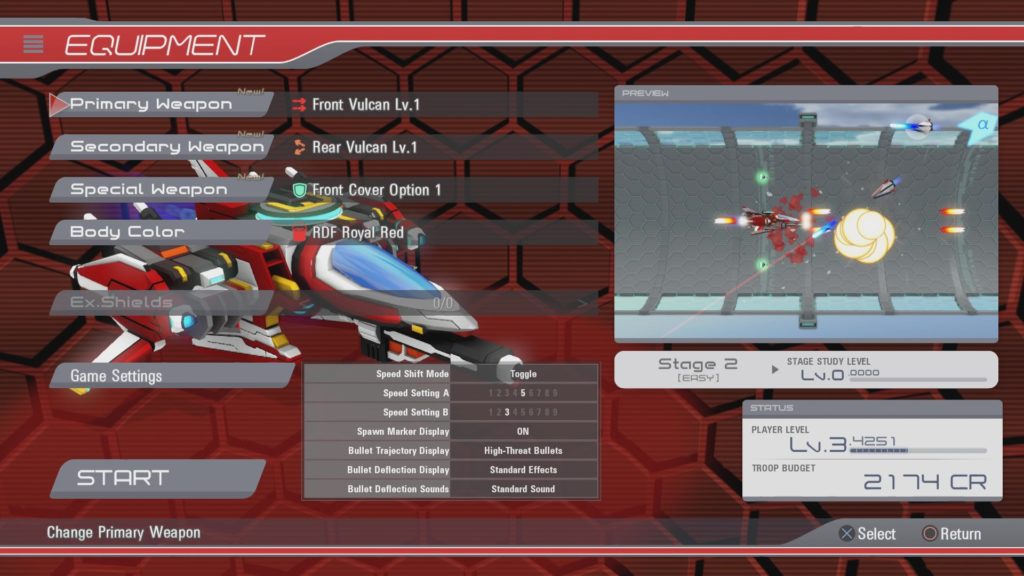
Prior to each stage, you have the opportunity to outfit Natsuki’s ship as you see fit, with any combination of the aforementioned primary and secondary weapons you’ve unlocked, along with any Option configurations you’ve acquired. Initially, you’ll only have simple cannons and a front-facing shield available, but with each playthrough of a stage — successful or not — you’ll earn credits for Natsuki to invest in “research and development”, allowing you to acquire new weapon choices. Note, though, that you still need to make progress in the game in order to unlock the more powerful weapons — you can’t just tool yourself up with the best possible weapons in the early stages and sail through!
That said, the Story mode does take a certain amount of pity on players who are struggling with its “Stage Study” mechanic. The more you play a stage, the more experience you gain for that stage, with each “level up” rewarding you with an additional point of EX Shield to make life a bit easier. Like in Arcade mode, the EX Shield points don’t regenerate like the main shields — but in Story mode they don’t take a power-up with them when you lose them, either. And, like everything else in the game, you’re under no obligation to use the EX Shield option in Story mode if you don’t want to — if you want to prove your skills and get through using only the three points of regenerating shield, you can simply disable the EX Shield options.
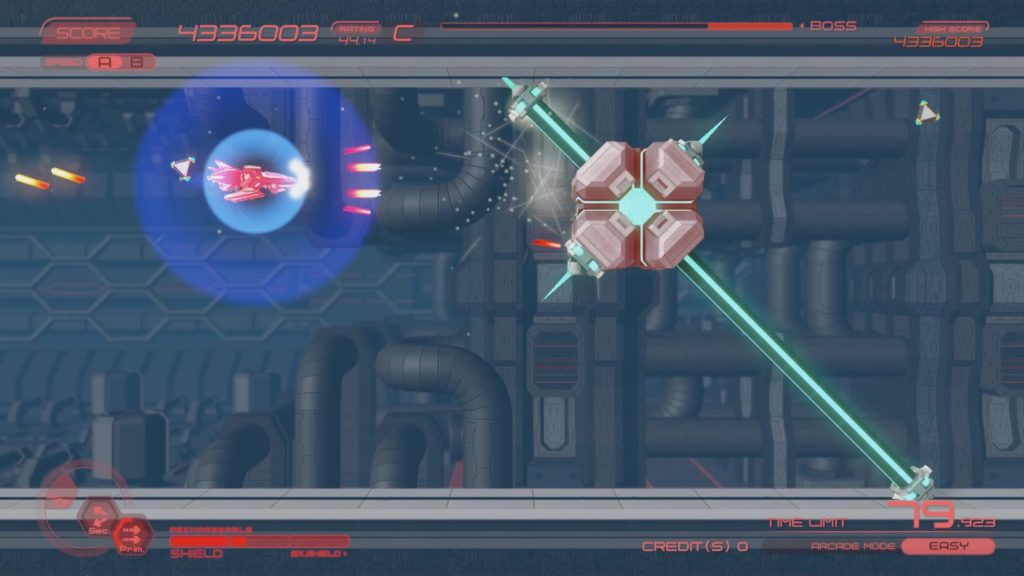
In terms of gameplay and structure, then, it’s safe to say that Natsuki Chronicles is superb — it offers a flexible gaming experience that is friendly and accessible to all ability levels, while providing a stiff challenge to grizzled old veterans. And all this is backed up by some rather lovely, distinctly stylised presentation that fits right in with Qute’s earlier titles.
Natsuki Chronicles, like many other polygonal shoot ’em ups, opts for relatively simple but effective graphics that maintain a solid, slick and consistent frame rate. This gives the game a very distinctive look and feel about it that is quite reminiscent of the Saturn and Dreamcast eras — only with the added modern benefits of widescreen and high definition. The retro-inspired feel of the visuals is complemented by an excellent soundtrack that combines old-school synthesised instrument sounds with the richness and fullness of modern compositional techniques; those familiar with Qute’s previous two titles Eschatos and Ginga Force will find the overall timbre of Natsuki Chronicles’ soundtrack very pleasing.
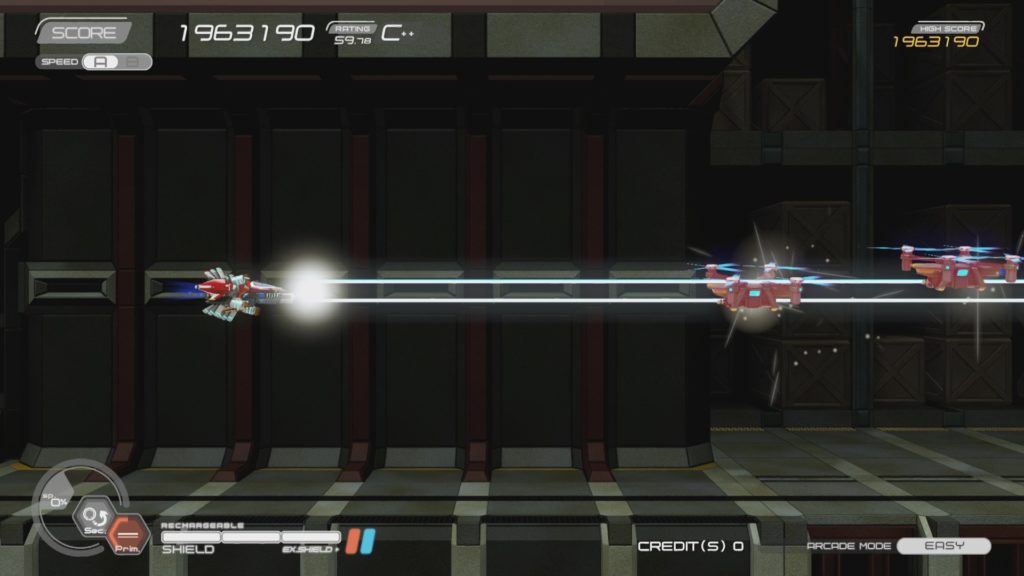
All in all, Natsuki Chronicles should be considered an absolutely essential purchase if you have the slightest interest in shoot ’em ups. Even if you’re not typically great at this sort of game, Natsuki Chronicles provides plenty of support to help you get better and make consistent progress — while if you’re a hardcore veteran, the game’s tougher difficulty levels coupled with the ability to turn off the various “helper” features will provide you with a stiff challenge.
Qute Corporation is definitely a company that likes to do things its own way, even if that often means it’s a good few years between each new title. From Judgement Silversword right through to Natsuki Chronicles, the company has successfully produced an absolutely exemplary library of modern shoot ’em ups — and I can’t wait to see what the team comes up with next in another half a decade!
Join The Discussion
Rice Digital Discord
Rice Digital Twitter
Rice Digital Facebook
Or write us a letter for the Rice Digital Friday Letters Page by clicking here!
Disclosure: Some links in this article may be affiliate links, which means we may earn a small commission if you make a purchase after clicking on them. This is at no additional cost to you and helps support Rice Digital!
- Letter from the Editor: passing the torch - June 30, 2023
- Super Woden GP 2 is looking promising - June 30, 2023
- Inti Creates is making a 32 bit-style Love Live action platformer - June 26, 2023




